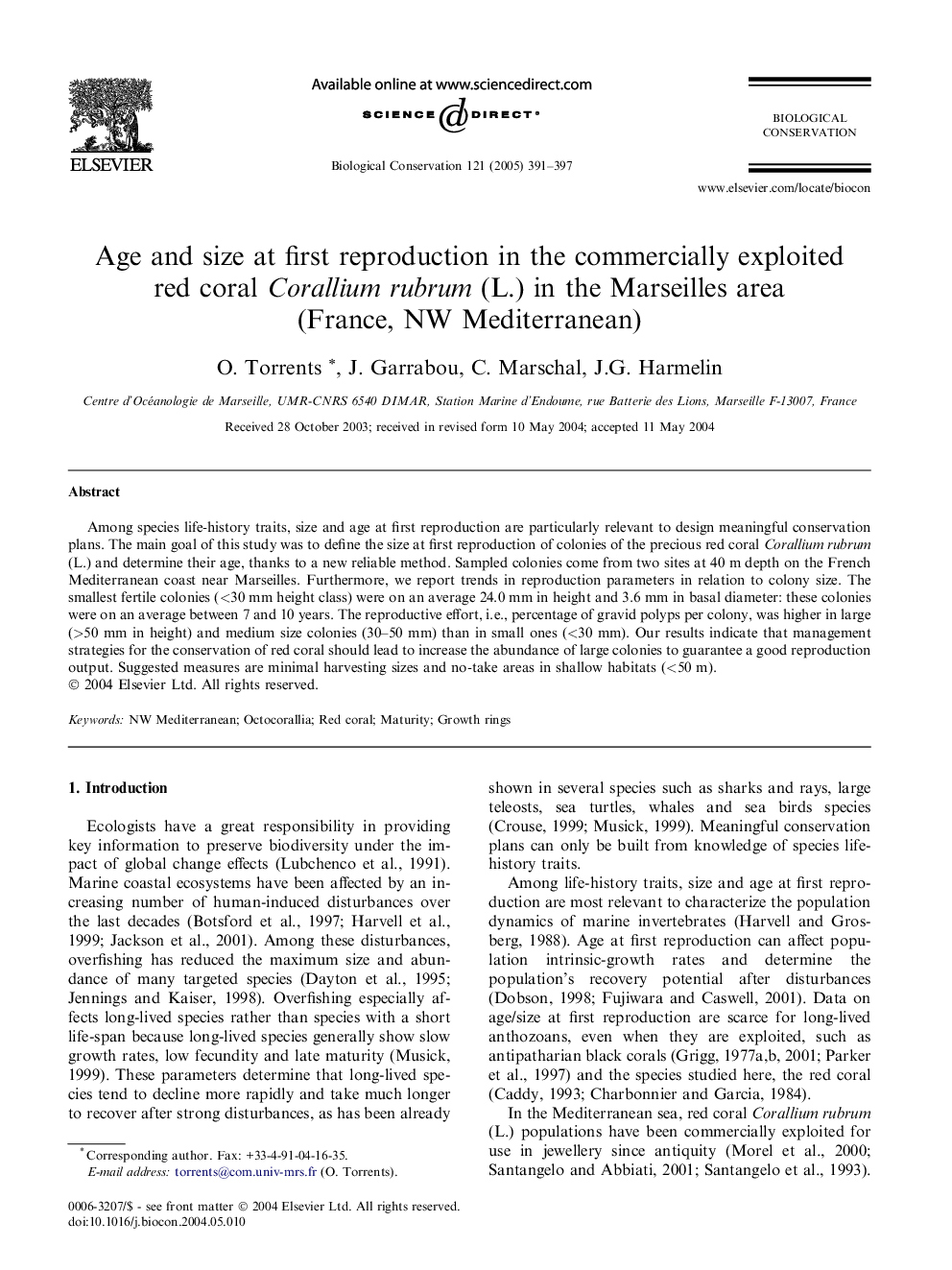| Article ID | Journal | Published Year | Pages | File Type |
|---|---|---|---|---|
| 9446076 | Biological Conservation | 2005 | 7 Pages |
Abstract
Among species life-history traits, size and age at first reproduction are particularly relevant to design meaningful conservation plans. The main goal of this study was to define the size at first reproduction of colonies of the precious red coral Corallium rubrum (L.) and determine their age, thanks to a new reliable method. Sampled colonies come from two sites at 40 m depth on the French Mediterranean coast near Marseilles. Furthermore, we report trends in reproduction parameters in relation to colony size. The smallest fertile colonies (<30 mm height class) were on an average 24.0 mm in height and 3.6 mm in basal diameter: these colonies were on an average between 7 and 10 years. The reproductive effort, i.e., percentage of gravid polyps per colony, was higher in large (>50 mm in height) and medium size colonies (30-50 mm) than in small ones (<30 mm). Our results indicate that management strategies for the conservation of red coral should lead to increase the abundance of large colonies to guarantee a good reproduction output. Suggested measures are minimal harvesting sizes and no-take areas in shallow habitats (<50 m).
Related Topics
Life Sciences
Agricultural and Biological Sciences
Ecology, Evolution, Behavior and Systematics
Authors
O. Torrents, J. Garrabou, C. Marschal, J.G. Harmelin,
